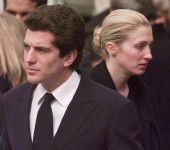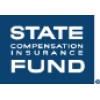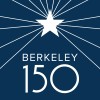More Obituaries
During September 2004 Pete Bennett was attacked by Gary Vinson Collins who was Danville Building Inspector.
By 2011, he was dead a few weeks after falling to his death at Palo Alto High School, Palo Alto CA

Bennett Litigation
Gary Vinson Collins
During September 2004 Pete Bennett was attacked by Gary Vinson Collins who was Danville Building Inspector.
By 2011, he was dead a few weeks after falling to his death at Palo Alto High School, Palo Alto CA

Bennett Litigation
Dead Series
- THE DEAD SERIES HOME PAGE
Series Topics - Dead Witnesses
- Dead Bankers
- Dead Programmers
- Dead Students
-
Bennett v. Collins
Gary Vinson Collins
Gary Vinson Collins 11/27/68 - 12/19/11 Resident of San Ramon Gary age 43 passed away in Stanford Medical Center as a result of complications resulting from injuries he sustained in a workplace accident. Gary born to Don & Mary Ann Collins grew up in Pleasant Hill and attended Acalanes High School. He spent many years helping his father Don Collins build their family businesses Lafayette Big O Tires and Oakdale Big O Tires. He later moved on to a successful career as a city building inspector. He was well known for his enthusiasm for life with his family and generosity as a loving caring friend. He is survived by his wife and soul-mate Renee Collins and his loving sons Justin 16 and Garrett 10, and his father Don Collins of Pleasant Hill. A Celebration of his life will be held at 4:00 pm January 4th at The Church on The Hill 20801 San Ramon Valley Blvd. San Ramon. A reception will be held for the family immediately following. In lieu of flowers, donations to the children's education fund can be made to CollegeAmerica, account number 73332486. Please mail contributions to American Funds P.O. Box 6164 Indianapolis, IN 46206-5154. - See more at: http://www.legacy.com/obituaries/contracostatimes/obituary.aspx?pid=155268786#sthash.cKUCe4NC.dpuf A Case for Racketeering?
The Murder of Collins
City Hall December 2, 2011
During a meeting in Walnut Creek City Hall with Chief Bryden, City Manager Ken Nordoff and Pete Bennett, legal documents were passed to Nordoff and Bryden.
By December Gary Vinson Collins was dead
Bennett v. Collins
2404. HOBBS ACT -- UNDER COLOR OF OFFICIAL RIGHTIn addition to the "wrongful use of actual or threatened force, violence, or fear," the Hobbs Act (18 U.S.C. § 1951) defines extortion in terms of "the obtaining of property from another, with his consent . . . under color of official right." In fact, the under color of official right aspect of the Hobbs Act derives from the common law meaning of extortion. As the Supreme Court explained in a recent opinion regarding the Hobbs Act,
"[a]t common law, extortion was an offense committed by a public official who took 'by color of his office' money that was not due to him for the performance of his official duties. . . . Extortion by the public official was the rough equivalent of what we would now describe as 'taking a bribe.'" Evans v. United States, 504 U.S. 255 (1992).
In order to show a violation of the Hobbs Act under this provision, the Supreme Court recently held that "the Government need only show that a public official has obtained a payment to which he was not entitled, knowing that the payment was made in return for official acts." While the definition of extortion under the Hobbs Act with regard to force, violence or fear requires the obtaining of property from another with his consent induced by these means, the under color of official right provision does not require that the public official take steps to induce the extortionate payment: It can be said that "the coercive element is provided by the public office itself." Evans v. United States, 504 U.S. 255 (1992); see United States v. Margiotta, 688 F.2d 108, 130 (2d Cir. 1982), cert. denied, 461 U.S. 913 (1983) ("[t]he public officer's misuse of his office supplies the necessary element of coercion . . . .").
This theory of extortion under color of official right has resulted in the successful prosecution of a wide range of officials, including those serving on the federal, state and local levels. For example: United States v. O'Connor, 910 F.2d 1266 (7th Cir. 1990), cert. denied, 111 S. Ct. 953 (1991) (police officer accepts payments from FBI agents posing as crooked auto parts dealers); United States v. Stephenson, 895 F.2d 867 (2d Cir. 1990) (international trade official in Department of Commerce accepts payments to influence ruling); United States v. Spitler, 800 F.2d 1267 (4th Cir. 1986) (state highway administrator accepts money from road building contractor); United States v. Wright, 797 F.2d 245 (5th Cir. 1986), cert. denied, 481 U.S. 1013 (1987) (city prosecutors accept money for not prosecuting drunk drivers); United States v. Greenough, 782 F.2d 1556 (11th Cir. 1986) (city commissioner accepts money for awarding city concession); United States v. Murphy, 768 F.2d 1518 (7th Cir. 1985), cert. denied, 475 U.S. 1012 (1986) (judges accept payments to fix cases); United States v. Mazzei, 521 F.2d 639 (3d Cir.) (en banc), cert. denied, 423 U.S. 1014 (1975) (state senator accepts money from landlord seeking government office lease). In United States v. Stephenson, 895 F.2d at 871-73, the defendant, who was a federal official, unsuccessfully contended that the Hobbs Act only applied to state and local officials and that prosecution of federal official for extortion would have to be exclusively brought under 18 U.S.C. §872: extortion by officers and employees of the United States. The court found that the government could seek a charge under whichever of these two overlapping statutes it thought appropriate. Moreover, "it is not a defense to a charge of extortion under color of official right that the defendant could also have been convicted of bribery." Evans v. United States, 504 U.S. 255 (1992).
GENERAL RULE: The usual fact situation for a Hobbs Act charge under color of official right is a public official trading his/her official actions in a area in which he/she has actual authority in exchange for the payment of money.
Some cases under certain fact situations, however, have extended the statute further. For example:
Some courts have held that a Hobbs Act violation does not require that the public official have de jure power to perform any official act paid for as long as it was reasonable to believe that he/she had the de facto power to perform the requested act. See United States v. Nedza, 880 F.2d 896, 902 (7th Cir. 1989) (victim reasonably believed state senator had the ability to impact a local business); United States v. Bibby, 752 F.2d 1116, 1127-28 (6th Cir. 1985); United States v. Sorrow, 732 F.2d 176, 180 (11th Cir. 1984); United States v. Rindone, 631 F.2d 491, 495 (7th Cir. 1980) (public official can extort money for permit beyond control of his office, so long as victim has a reasonable belief that he could affect issuance); United States v. Rabbitt, 583 F.2d 1014 (8th Cir. 1978), cert. denied, 439 U.S. 1116 (1979); United States v. Harding, 563 F.2d 299 (6th Cir. 1977), cert. denied, 434 U.S. 1062 (1978); United States v. Brown, 540 F.2d 364 (8th Cir. 1976); United States v. Hall, 536 F.2d 313 (10th Cir.), cert. denied, 429 U.S. 919 (1976); United States v. Hathaway, 534 F.2d 386 (1st Cir.), cert. denied, 429 U.S. 819 (1976); United States v. Mazzei, 521 F.2d 639, 643 (3rd Cir.) (en banc), cert. denied, 423 U.S. 1014 (1975); United States v. Price, 507 F.2d 1349 (4th Cir. 1974).
Most courts have held that a Hobbs Act violation does not require that the public official be the recipient of the benefit of the extortion, and that a Hobbs Act case exists where the corpus of the corrupt payment went to a third party. However, consistent with the federal offenses of bribery and gratuities under 18 U.S.C. § 201 (see 9 U.S.A.M. §§ 85.101 through 85.105), where the corpus of the corrupt payment inures to the benefit of a person or entity other than the public official most courts have also required proof of a quid pro quo understanding between the private corrupter and the public official. See United States v. Haimowitz, 725 F.2d 1561, 1577 (11th Cir.), cert. denied, 469 U.S. 1072 (1984) ("a Hobbs Act prosecution is not defeated simply because the extorter transmitted the extorted money to a third party."); United States v. Margiotta, 688 F.2d 108 (2d Cir. 1982), cert. denied, 461 U.S. 913 (1983) (insurance agency made kickbacks to brokers selected by political leader of town); United States v. Scacchetti, 668 F.2d 643 (2d Cir.), cert. denied, 457 U.S. 1132 (1982); United States v. Forszt, 655 F.2d 101 (7th Cir. 1981); United States v. Cerilli, 603 F.2d 415 (3rd Cir. 1979), cert. denied, 444 U.S. 1043 (1980); United States v. Trotta, 525 F.2d 1096 (2d Cir. 1975), cert. denied, 425 U.S. 971 (1976); United States v. Brennan, 629 F.Supp. 283 (E.D.N.Y.), aff'd, 798 F.2d 581 (2d Cir. 1986). But see McCormick v. United States, 500 U.S. 257 (1991)(allegedly corrupt payment made in the form of a campaign contribution to a third party campaign organization was insufficient to support a Hobbs Act conviction absent evidence of a quid pro quo).
Some courts have held that the Hobbs Act can be applied to past or future public officials, as well as to ones who presently occupy a public office at the time the corrupt payment occurs. See United States v. Meyers, 529 F.2d 1033, 1035-38 (7th Cir.), cert. denied, 429 U.S. 894 (1976) (court answered affirmatively the question "whether, within the meaning of the Hobbs Act, it is a crime for candidates for political office to conspire to affect commerce by extortion induced under color of official right during a time frame beginning before the election but not ending until after the candidates have obtained public office."); United States v. Lena, 497 F.Supp. 1352, 1359 (W.D. Pa. 1980), aff'd mem., 649 F.2d 861 (3rd Cir. (1981); United States v. Barna, 442 F.Supp. 1232, 1235 (M.D.Pa. 1978), aff'd mem., 578 F.2d 1376 (3rd Cir.), cert. denied, 439 U.S. 862 (1978).
Some courts have held that private persons who are not themselves public officials can be convicted under this provision if they caused public officials to perform official acts in return for payments to the non-public official. United States v. Margiotta, 688 F.2d 108 (2d Cir. 1982), cert. denied, 461 U.S. 913 (1983) (court upheld conviction of head of local Republican Party under color of official right where defendant could be said to have caused, under 18 U.S.C. §2(b), public officials to induce a third party to pay out money); see United States v. Haimowitz, 725 F.2d 1561, 1572-73 (11th Cir.), cert. denied, 469 U.S. 1072 (1984) (private attorney's conviction of Hobbs Act violation upheld due to complicity with state senator); United States v. Marcy, 777 F.Supp. 1398, 1399-400 (N.D.Ill. 1991); United States v. Barna, 442 F.Supp. 1232 (M.D. Pa.), aff'd mem., 578 F.2d 1376 (3rd Cir.), cert. denied, 439 U.S. 862 (1978). But see United States v. McClain, 934 F.2d 822, 829-32 (7th Cir. 1991) ("we believe that, as a general matter and with caveats as suggested here, proceeding against private citizens on an 'official rights' theory is inappropriate under the literal and historical meanings of the Hobbs Act, irrespective of the actual 'control' that citizen purports to maintain over governmental activity.").
Some courts have also held that private individuals who make payments to a public official can be charged under the Hobbs Act, either as an aider and abettor or co-conspirator, if he or she is truly the instigator of the transaction. See United States v. Torcasio, 959 F.2d 503, 505-06 (4th Cir. 1992); United States v. Spitler, 800 F.2d 1267, 1276-79 (4th Cir. 1986) (conviction affirmed for aiding and abetting extortion under color of official right even though defendant, who paid kickbacks from corporate coffers, was an officer of the victim corporation ); United States v. Wright, 797 F.2d 245 (5th Cir. 1986). But see United States v. Tillem, 906 F.2d 814, 823-24 (2d Cir 1990) (consultant employed to help restaurants obtain approvals from corrupt health inspectors had no stake in the conspiracy and was not promoting the outcome).
Finally, in a federal prosecution of a state legislator, there is no legislative privilege barring the introduction at trial of evidence of the defendant's legislative acts. The Supreme Court has held that in such a prosecution a speech or debate type privilege for state legislators cannot be made applicable through Fed.R.Evid. 501. The Court said such privilege is not required by separation of powers considerations or by principles of comity, the two rationales underlying the Speech or Debate Clause of the U.S. Constitution, art. I, §6, cl. 1. United States v. Gillock, 445 U.S. 360, 368-74 (1980).
CAVEAT: The Hobbs Act and Campaign Contributions. The Supreme Court has held that, when an allegedly corrupt payment masquerades as a campaign contribution, and when there is no evidence that the corpus of the "contribution" inured to the personal benefit of the public officer in question or was a product of force or duress, the Hobbs Act requires proof of a quid pro quo agreement between the contributor and the public officer. McCormick v. United States, 500 U.S. 257 (1991). However, the Court has also held that proof that a quid pro quo agreement existed in a corruption case brought under the Hobbs Act may be proven circumstantially. Evans v. United States, 504 U.S. 255 (1992). This interpretation of the dimensions of the hobbs Act in corruption scenarios is consistent with the parameters of the facts needed to prove the federal crimes of bribery and gratuities under 18 U.S.C. § 201. See United States v. Brewster, 50-6 F.2d 62 (D.C. Cir. 1972), 9 U.S.A.M. §§ 85.101 through 85.105, supra.
CAVEAT: The Hobbs Act and evidence of a quid pro quo. When the Hobbs Act is applied to public corruption scenarios that lack evidence of actual "extortionate" duress, some courts have interpreted the Hobbs Act very strictly to require proof of a quid pro quo relationship between the private and the public parties to the transaction, even where the corpus of the payment inured to the personal benefit of the public official. See United States v. Martinez, 14 F.3d. 543 (11th Cir. 1994)(Hobbs Act did not apply to pattern of in-kind payments given personally to Florida mayor in the absence of evidence of a quid pro quo relationship between the mayor and alleged private corrupter); United States v. Taylor, 993 F.2d 382 (4th Cir. 1993)(same); United States v. Montoya, 945 F.2d 1086 (9th Cir. 1991)(same); contra United States v. Brandford, 33 F.3d 685 (6th Cir. 1994)(Hobbs Act does not require proof of quid pro quo where corpus of corrupt payment inured to the personal benefit of public officer). In addition, some courts require that corruption cases brought under the "color of official right" clause of the Hobbs Act be accompanied by proof that the public official induced the payment. See Montoya, supra.
At the very least, the courts will probably not extend the "color of official right" clause of the Hobbs Act beyond the parameters of crimes of bribery and gratuities in relation to federal officials that are described in 18 U.S.C. § 201. See United States v. Brewster, 506 F.2d 62 (D.C. Cir. 1974), 9 U.S.A.M. §§ 85.101 through 85.105, supra. This means that where the corpus of the alleged corrupt payment passed to someone or something other than the public official personally (including those where it passed to a political committee), the Hobbs Act probably does not apply unless there is also evidence of a quid pro quo. And even then, some Circuits, such as the Ninth, require additional proof that the payment was induced by the public official.
PRACTICE TIP: The Public Integrity Section possesses considerable expertise in using the Hobbs Act to prosecute public corruption. While not required, AUSAs are strongly urged to consult with the Public Integrity Section in the investigation and prosecution of corruption cases under this statutory theory. Public Integrity can be reached at 202-514-1412, or by fax at 202-514-3003.
[cited in JM 9-131.010]




















